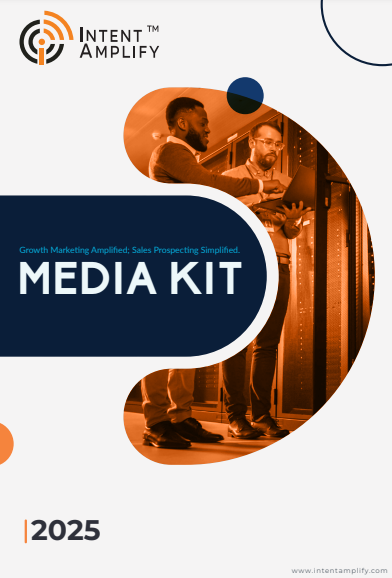
How to Construct a Confident Marketing Campaign – A Step-by-Step Guide for B2B Leaders
- Last updated on: August 25, 2025
Operating in a high-stakes B2B environment doesn’t give much margin for uncertainty. A business that is uncertain to start a campaign or is uncertain if it is clearly communicating its value will let huge market opportunities slip away to a rival who is absolutely sure of its messaging and has faith in its actions. A B2B Confident Marketing Campaign is not a void of speculation; it’s an extremely well-thought-out plan that uses messaging supported by strategic sophistication and insight.
A B2B campaign also determines other reactions to a shifting market, such as unstable marketplace behavior. Intelligent B2B organizations do not view strategically calculated marketing as play or merely a fun playground; the payoffs of missing the market seriously squander marketing investments. This article outlines an action-by-action plan formulated for B2B leaders to create a marketing campaign that ultimately delivers not only paper results, but quantifiable business results.
Why Confidence is Important in B2B Marketing
Marketing confidence is not just an attitude; it indicates how effectively strategy, information, and performance align. According to McKinsey, B2B firms with data-backed campaign plans have a 23% higher chance of outgaining their competitors’ top-line growth. To do this, confidence is derived from clarity: awareness of your customers, a tested (and thus trusted) message, and regular implementation through the channels you select.
Lack of confidence in campaigns can result in weak messages that are not memorable. Uneven platform execution and missed opportunities due to procrastination are pluses. Stakeholder acceptance, reduced uncertainty, and greater momentum for sales teams to close leads as customers are all advantages of confident campaigns.
Step 1: Define Clear, Measurable Objectives
A winning Confident marketing campaign strategy can be initiated by an objective communicated clearly. Undirected campaigns do not end up with expectations clearly defined and often have nothing to show for it. The objective must be clear, whether generating pipeline, creating brand awareness, or accelerating account-based engagement.
For instance, a SaaS that is attempting to penetrate the mid-market may have the following objective: “Create 500 qualified opportunities from North American IT directors in six months.”
This goal is Targeted (North American IT directors), Measurable (500 opportunities), and Time-bound (six months). Great campaigns start with goals that everyone, including marketing to sales, can get behind.
Step 2: Know Your Audience with Accuracy
Audience research is where confidence begins. A confident marketing campaign is not based on sweeping generalizations. It is based on firmographic, technographic, and behavioral knowledge.
This requires more than just “CIOs in banking,” it goes deeper. What are their daily challenges? What technologies are they using? And what is their decision-making process?
For instance, the fintech industry. An assertive campaign among CFOs within this industry would emphasize timelines for when real-time compliance automation makes the campaign stand out from run-of-the-mill “financial efficiencies.” Any prospect reading the campaign is aligning with both the pain point as well as the aspirational objectives of the audience.
Step 3: Develop Messaging That Encourages Trust
B2B messaging confidence doesn’t equate to larger claims; it arises from higher relevance. A Confident campaign illustrates:
Clarity: A straightforward message that is not swamped by jargon overload.
Authority: Messaging grounded in either fact-based data or glaring success stories.
Consistency: A message that looks and feels and sounds the same across media.
For instance, security firms tend to be afflicted with overly hyped, overly convoluted messaging, whereas the strongest confidence campaigns have watered down their offer to: “We protect businesses from insider threats before they even occur.” It is specific, assertive, and memorable.
Step 4: Align Marketing and Sales from the Start
No successful campaign with sales alignment is possible. A study by LinkedIn revealed that 87% of sales and marketing executives think alignment is the key to business growth. However, misalignment is still proving to be one of the most significant hindrances in making campaigns a success.
A confident campaign gives Sales a rich insight into campaign purpose, messaging and timing, sales enablement content (battle cards, case studies, email templates), and closing loops for feedback to enhance tactics based on what sales learned at the frontlines. When both marketing and sales teams are working together, confidence in the campaign goes up even more.
Step 5: Select the Right Channels for Amplification
Confidence is about being present in the right places and over and over. A confident campaign plan where the target audience engages with content and then does it again. For a business decision maker, this might be in terms of running LinkedIn ads for account-based marketing (ABM), writing thought leadership pieces in industry publications, or hosting webinars or events to invite direct participation. Focusing on channels boosts confidence and efficiency while also making the best use of resources by ensuring that the most critical placements may be repeated.
Step 6: Build Flexibility Into the Campaign
Finally, the most important characteristic of a strong marketing campaign is adaptability, rather than rigidity. Strong, confident marketing is characterized by adaptability rather than rigidity. Changes may be required in the middle of a campaign due to market changes, rival moves, or changing buyer behavior.
To optimize flexibility, apply A/B testing to find out what creative and message approaches work best. To monitor real-time engagement signals. And on top of that, having contingency budgets prepared in case there is an opportunity to expand what is performing. Confidence is being able to switch a campaign without losing an overview of the large picture.
Step 7: Measure, Learn, and Improve
A trackable campaign can’t be sure. Metrics offer the assurance B2B executives require to grow success. A few of the most important metrics for a successful marketing campaign are the following.
Pipeline influence: Having a Count of how many opportunities the campaign touches.
Conversion rates: Impressions to MQLs to SQLs.
Account engagement: Noting if the Target accounts are engaging with your content.
But measurement in itself is not sufficient. Confidence is derived from learning and applying lessons to the next campaign. This establishes a cycle of ongoing improvement.
Real-World Example: Building Confidence in Action
Take a global SaaS company launching in the APAC region. Their initial campaign struggled with unclear messaging and no sales alignment. After restructuring, with these steps in place. having clear, defined goals, tightening audience segments, and targeting specific LinkedIn ABM ads. The business experienced:
- A 45% increase in engagement across accounts within three months.
- 200+ qualified opportunities created in six months.
- Greater alignment between sales and marketing, leading to greater pipeline confidence.
This transformation illustrates how a confident marketing campaign doesn’t simply appear sleek. It produces quantifiable growth.
Confidence as a Competitive Advantage
In B2B marketing, confidence is a differentiator. It inspires customers to trust your brand, empowers teams to move with clarity, and ensures resources generate measurable returns. A confident marketing campaign is the outcome of strategic planning, audience understanding, sales alignment, channel discipline, and continuous learning.
For B2B leaders, the future campaign is not merely about being visible. It’s about establishing authority, pipeline expansion, and lasting influence. And that starts with confidence at each step.
FAQs:
1. What is a Confident Marketing Campaign?
It’s a campaign crafted with dynamic targeting, omnichannel orchestration, personalization, and measurable ROI.
2. How do you measure a Confident Marketing Campaign?
By measuring pipeline contribution, influenced revenue, deal velocity, and opportunity readiness.
3. Why are Confident Marketing Campaigns better than Conventional Marketing Campaigns?
They ensure predictability and alignment by focusing on business results instead of vanity metrics.
4. How can AI help a Self-Assured Marketing Initiative?
AI supports audience targeting, channel optimization, personalized content, and more precise outcome forecasting.
5. What trends will shape 2025 Confident Marketing Campaigns?
AI copilots, retention-oriented campaign strategies, predictive spend optimization, and privacy-first targeting.



